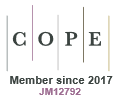Fertiliser use effciency by containerised nursery plants 2. Nutrient leaching
Australian Journal of Agricultural Research
48(2) 259 - 265
Published: 1997
Abstract
Nutrient losses from controlled-release fertilisers (CRFs) and an organic-based fertiliser derived from dehydrated poultry manure applied at planting were investigated under a range of irrigation conditions. The CRFs were Osmocote NPK (3–4 month) (Osm), Nutricote NPK (90-day) (Nut), and Nut+40-day, and the organic based fertiliser was Dynamic Lifter (DL). They were applied pre-planting at a standard rate equivalent to 800 g N/m3 and at double this rate to pots containing sand, composted pinebark, and hardwood sawdust medium that had received nutrient amendment during formulation.A pot containing medium without a plant was included to estimate the contribution of the medium to nutrient leaching from fertiliser treatments. In all experiments, leachate was collected weekly, the volume was recorded, and nutrient concentrations were determined.
The largest losses of N, K, Ca, and Mg occurred in the first week, and of P in the second week, after potting up for both fertilised and control pots. Over a 10-week period, with the exception of the Nut+40-day treatment, P and K leaching from equivalent rates of DL exceeded (P < 0·05) Osm = Nut. The percentages of fertiliser leached (after adjusting fertiliser treatment for control) were Osm 20–38% N, 2–8% P, 12–42% K; Nut 10–43% N, 12–18% P, 22–45% K; and DL 1–14% N, 4–15% P, 78–91% K. In a laboratory experiment where each fertiliser was incubated at 35C with moist potting medium and volatilised ammonia was trapped in dilute acid, a further 33% was recovered from DL and <1% from the CRFs. The inclusion of the 40-day formulation to Nut increased (P < 0·05) the percentage of N, P, and K leached, to 52, 39, and 69%.
In leachate, nitrate was the main form of N from CRFs and ammonium the main form from DL. The maximum nitrate-N concentrations (mg/L) at the standard fertiliser rate were Osm 55, Nut 56, and DL 46. These increased (P < 0·05) to 78 and 165 mg/L when the rate of Osm and Nut was doubled. A concentration of 279 mg/L was recorded with the Nut+40-day formulation. The maximum leachate ammonium-N concentrations (mg/L) at the standard fertiliser rate were Osm 64, Nut 51, and DL 125. Leachate was diluted 1 : 4 in nursery runoff water by irrigation runoff, and concentrations exceeded the 10 mg/L limit imposed by the Clean Waters Act of NSW.
In a further 2 experiments, an increase in leachate volume increased (P < 0·05) nutrient leaching from pots fertilised with the 2 CRFs over 4 weeks. When the leaching fraction was increased from 0 to 56%, leaching of N, K, Ca, and Mg increased more than 4-fold. The low leaching fractions were associated with high nutrient concentrations, and at a 12% leaching fraction, maximum concentrations (mg/L) were 864 nitrate-N, 127 K, and 248 Ca.
Nutrient runoff from nurseries can be reduced by adopting efficient irrigation design, by scheduling irrigation, and by minimising the use of soluble fertiliser sources.
https://doi.org/10.1071/A96030
© CSIRO 1997


